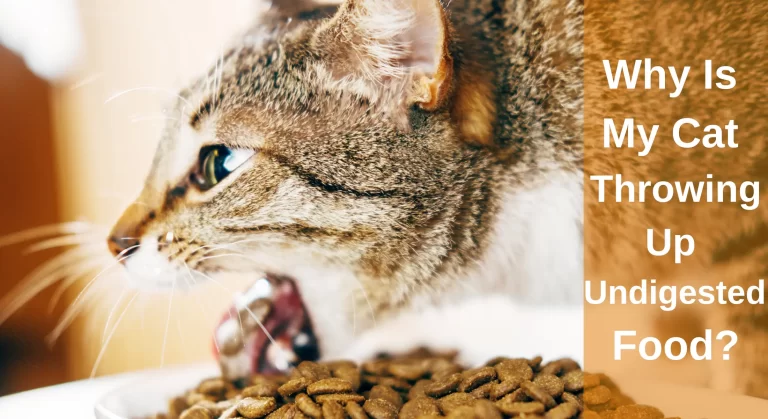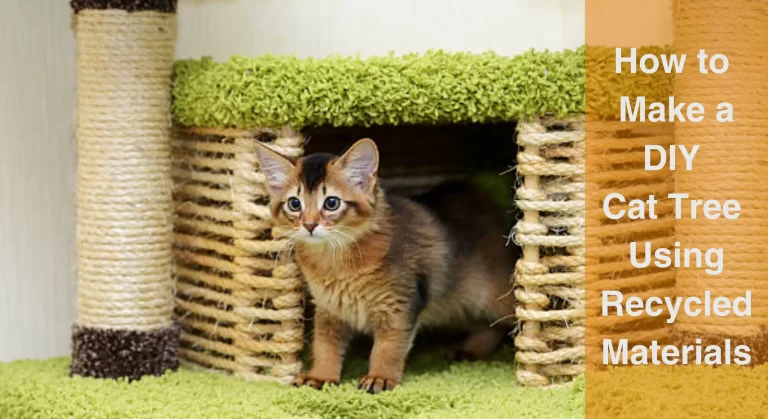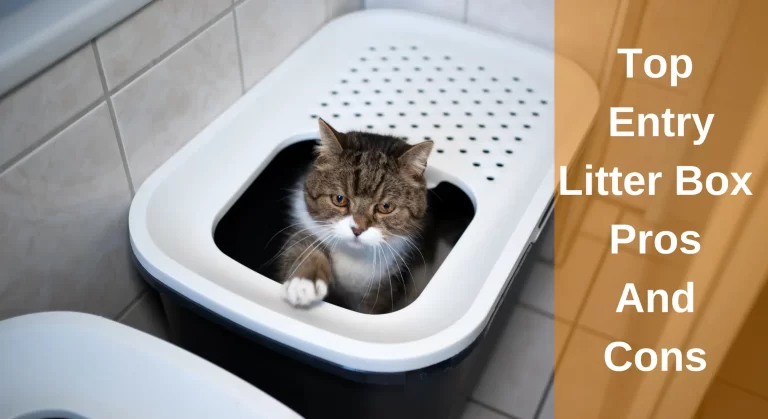How Long to Keep a Cat Confined After Spay or Neuter?
If you’re a cat owner, spaying or neutering your furry friend is important to ensuring their overall health and well-being. However, once your cat has undergone the spay surgery, it’s important to keep them confined or restrict a specific area to prevent them from jumping over walls or fences and risking hurting their incisions, and monitored for a period of time to ensure proper healing.
After a cat has been spayed, you must know How Long to Keep a Cat Confined After Spay and how to take care of it.
It is recommended that she stays indoors for the first two days following the operation (or longer if possible) to allow the wound to heal.
In this article, we’ll discuss the ideal confinement period after spaying a cat and provide helpful tips to make the process as stress-free as possible.
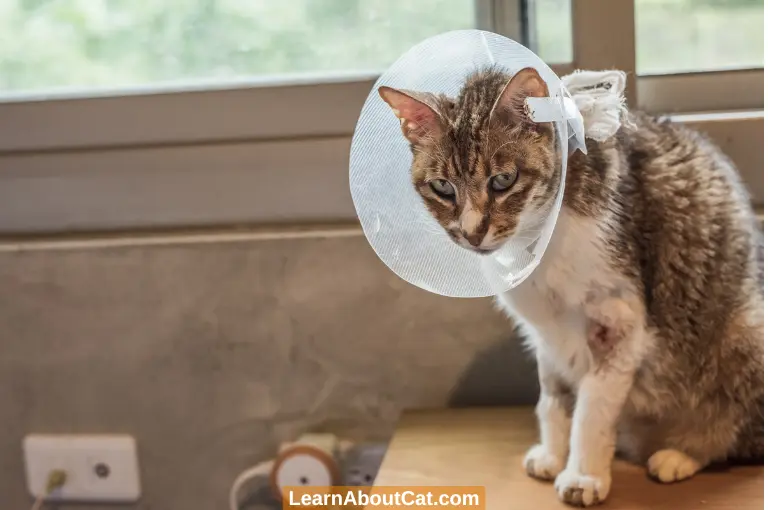
What Happens When a Cat Is Spayed?
Spaying, also known as an ovariohysterectomy, is a surgical procedure in which a female cat’s ovaries and uterus are removed. The procedure is usually performed under general anesthesia and involves making a small incision in the abdomen.
During the surgery, the veterinarian will locate the ovaries and remove them. The uterus is then removed through the same incision. After removing the ovaries and uterus, the incision is closed using stitches or surgical glue.
Spaying is a permanent form of birth control for cats, preventing them from going into heat and becoming pregnant.
After the surgery, cats are typically monitored in the veterinary hospital for a few hours to ensure they recover well from the anesthesia. However, following your veterinarian’s post-operative instructions carefully is important to ensure a smooth recovery.
Find Out: Cat Lethargic 3 Days After Spay: Is It Normal? Things Cat Owners Should Know
How Long Should I Confine My Cat After Spay?
A cat should stay indoors for at least two days after surgery to ensure that the anesthesia has fully worn off and they are stable. However, it is advised that you restrict a cat indoors for the whole healing process. This usually takes 7-10 days. However, you may keep them confined for longer if you believe the wound has not yet fully healed.
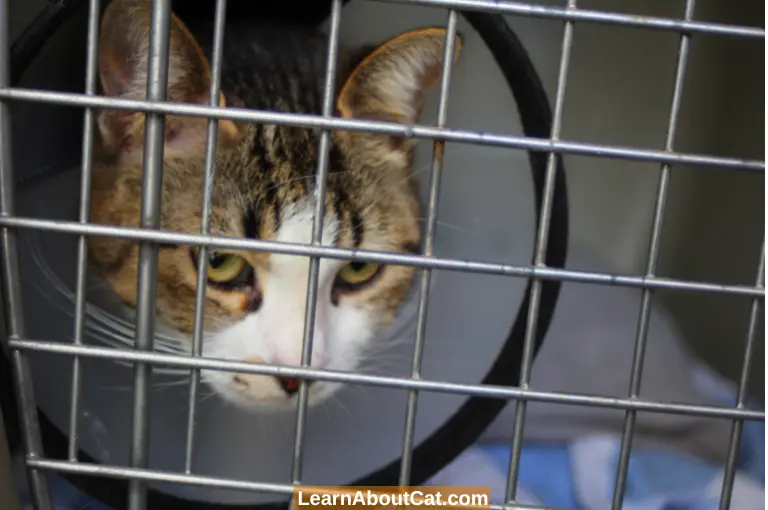
After the initial two days, your cat should gradually be allowed to resume their normal activities. However, it’s important to restrict their movements and activity level for at least a week after the surgery. This means keeping them in a small room or crate and limiting their access to stairs and high places.
Following your veterinarian’s specific instructions regarding your cat’s confinement period is crucial. Some cats may require extended confinement, while others may be ready to leave their space earlier than seven days.
Also Read: Cat Not Eating After Spay: Reasons Cat Owners Should Know
Potential Complications to Watch Out For
While spaying a cat is a routine procedure, there are potential complications to watch out for during recovery. Some common complications include:
- Excessive licking or biting of the incision site
- Bleeding or swelling
- Infection
- Digestive issues, such as vomiting or diarrhea
If you notice any of these symptoms, contact your veterinarian immediately.
Also, Check Out: Female Cat Behavior After Spaying: Expected Changes?
Why is Confinement Necessary After Spaying a Cat?
After spay surgery, keeping your cat confined to a small, quiet space for a few days is essential to promote proper healing and prevent potential complications. Here are some of the reasons why confinement is crucial after a spay procedure:

1. Reduce the Risk of Infection
The incision site where your cat was spayed is a vulnerable area at risk of infection. Keeping your cat in a clean, quiet space can reduce the risk of exposure to harmful bacteria and other germs that could cause infection.
Interesting Reading: Do Cats Inbreed? Things Cat Owners Should Know
2. Prevent Licking or Chewing of the Incision Site
After surgery, your cat may feel itchy or uncomfortable around the incision site, which could lead to licking or chewing. This can cause damage to the incision and slow down the healing process.
Confining your cat to a small space can prevent them from accessing the incision site and causing further harm.
3. Promote Rest and Healing
After surgery, your cat will need plenty of rest and a stress-free environment to promote proper healing. Confined spaces help limit your cat’s movement, reducing the risk of overactivity or accidental injury complications.
4. Make Post-Operative Care Easier
By confining your cat to a small space, you can monitor their food and water intake, bathroom habits, and overall behavior more closely. This can make detecting potential problems easier and ensure that your cat is healing properly.
5. Reduce Stress and Anxiety
Confinement can help reduce stress and anxiety in your cat by providing a safe and secure environment. By limiting their exposure to new people, other animals, and loud noises, you can help ease their recovery and promote a smoother transition back to their regular routine.
How to Keep Your Cat Comfortable During Confinement
Confining your cat after spay surgery is essential for its health and recovery. However, ensuring that your cat is comfortable and happy during their confinement is also important. Keeping your cat comfortable during confinement can be a challenge, so here are some tips:

1. Provide a Cozy Space
Your cat will likely feel more comfortable and secure in a small, cozy space. Put a soft blanket or bed in a quiet room away from distractions and loud noises. You should make sure that the room is warm enough and that it is ventilated adequately.
2. Limit Physical Activity
During confinement, limiting your cat’s physical activity is important to prevent complications and promote healing. This means avoiding strenuous play, jumping, or running and keeping your cat in a small, enclosed area where it can’t climb or jump up to high places.
3. Offer Familiar Smells and Sounds
Cats are creatures of habit and feel more comfortable in familiar environments. Consider placing a favorite toy, blanket, or other items that have a familiar scent in their confined space. Additionally, playing soothing music or leaving the TV on in the background can help provide a sense of comfort and security.
4. Provide Adequate Bedding
Providing your cat with comfortable bedding is also essential for their recovery. Soft blankets or towels can line their crate or bed, and you may want to provide additional blankets or a heating pad to keep them warm and cozy.
- Cat-Proof Bedding: If your little bedroom is cat-proof, you can keep your cat there. Don’t let your cat leap from the bed or other pieces of furniture. The room should only have a low bed and no other furnishings. If you cannot remove the furniture from the room, install pet ramps or stairs next to it so your cat can use them before jumping. However, after the treatment, stairs are also not to be used.
- Vet Office: If you feel unprepared to care for your cat at home or don’t have a proper place to keep it secure, see your veterinarian or a local veterinary institution.
5. Keep Them Entertained
Your cat will need some form of entertainment during their confinement period to prevent boredom and reduce stress. Consider providing toys or puzzle feeders that can keep them mentally stimulated. Playing or grooming your cat is also a great way to interact with her.
6. Ensure Adequate Food and Water
Ensure your cat has access to fresh food and water at all times. If your cat has a decreased appetite after surgery, consider offering smaller, more frequent meals. Make sure your cat drinks enough water to avoid dehydration
7. Monitor and Manage Pain
Your cat may experience some pain or discomfort after spay surgery. For your cat to stay comfortable during confinement, speak to your veterinarian about pain management options. This may include medication or other pain relief techniques.
8. Give Plenty of Attention and Affection
Finally, giving your cat plenty of attention and affection during confinement is important. Spend time with them, play gently, and offer plenty of cuddles and pets to help them feel loved and reassured during this stressful time.
Signs Your Cat is Ready to Leave Confinement
After your cat’s spay surgery, it’s essential to keep them confined for a period of time to allow for proper healing. However, you may wonder when it’s safe to let your furry friend out of confinement and return to their regular routine. Here are some signs to look for that indicate your cat is ready to leave confinement:
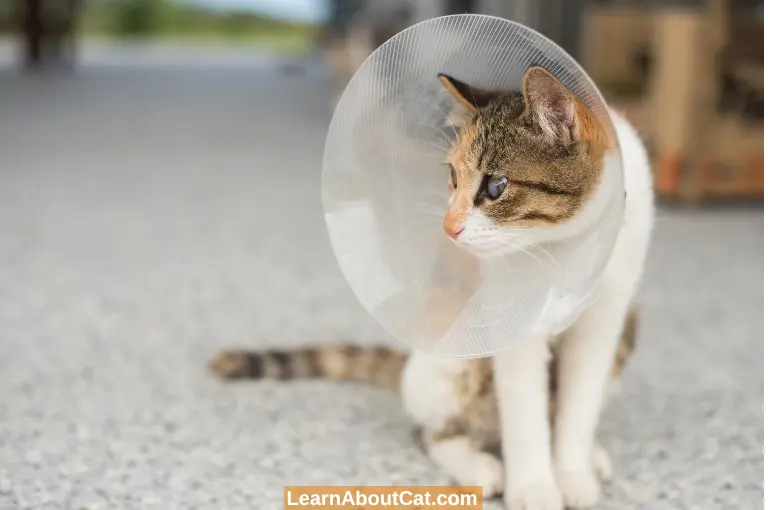
1. The Incision Site Has Healed
One of the most important factors to consider when deciding whether to release your cat from confinement is the state of its incision site. The incision should be fully healed, with no signs of redness, swelling, or discharge.
2. Your Cat is Active and Energetic
Another sign that your cat may be ready to leave confinement is their activity level and energy. If your cat is showing signs of restlessness, such as pacing or meowing excessively, it may be ready to leave its confinement space.
3. Your Cat is Eating and Drinking Normally
After their spay surgery, your cat may experience a loss of appetite or difficulty drinking water. However, they should return to their normal eating and drinking habits once they are fully healed.
4. Your Cat is Using the Litter Box Normally
In addition to eating and drinking, your cat’s bathroom habits can indicate whether they are ready to leave confinement. If your cat uses the litter box normally and shows no discomfort, it may be ready to leave its confinement space.
5. Your Veterinarian Gives the All-Clear
Finally, it’s essential to consult with your veterinarian before releasing your cat from confinement. They can examine your cat’s incision site and overall health to ensure that they are ready to return to their regular routine.
Also Read: How Long Can You Leave a Cat Alone Safely?
Benefits of Spaying Female Cats
Spaying is the process of removing a female cat’s reproductive organs, including the ovaries and uterus. Here are some of the benefits of spaying female cats:
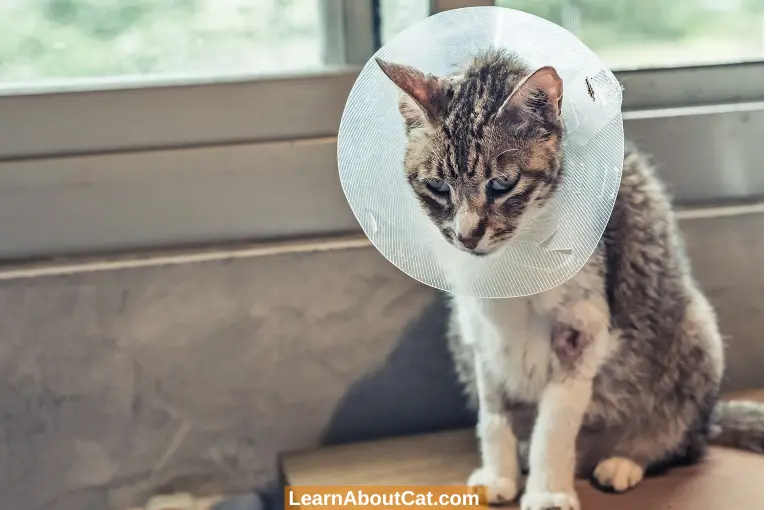
- Preventing Unwanted Litters: Spaying your female cat can help prevent unwanted litters of kittens, which can contribute to overpopulation and strain animal shelters.
- Eliminating the Risk of Certain Cancers: Spaying can eliminate the risk of ovarian and uterine cancers and greatly reduce the risk of mammary (breast) cancer.
- Reducing the Risk of Pyometra: This is a potentially life-threatening uterus infection that can occur in unspayed female cats. Spaying eliminates the risk of this condition.
- Reducing the Risk of Unwanted Behaviors: Spaying can help reduce undesirable behaviors, such as yowling, pacing, and spraying, associated with female cats in heat.
Check Out: How Many Times Can A Cat Get Pregnant In A Year?
Frequently Asked Questions
How long will my cat experience discomfort after their spay surgery?
After surgery, your cat might experience pain or discomfort for a few days (5-7 days), which can be managed with pain medication prescribed by your veterinarian. Ensuring she’s as comfortable as possible while she recovers is crucial.
Can I allow my cat to roam freely after their spay surgery?
No, it’s important to restrict your cat’s movements and activity level for at least a week. Even if your cat spends all of its time indoors, you shouldn’t allow it to go outside during the first week after the treatment to prevent complications. Because a cat is weak; therefore, moving about might lead to accidents, injuries, and physical strain that would delay healing.
Should I leave my cat alone After Being Spayed?
You should not leave your cat alone; the first 12-24 hours after surgery are important for your cat’s recovery. During this period, it’s critical to watch out for post-operative bleeding and regular urine.
After that, if your cat is content and urinating, you may keep her with an e-collar in a cat-proofed space. You still need to ensure her medication schedule is appropriately followed. Check the area or incision at least twice daily for any signs of infection, edema, or irritation.
When can I bathe my cat after their spay surgery?
It’s important to avoid giving your cat a bath for at least 14 days or exposing them to water until its incision site has fully healed to prevent infection. Forbidding baths will make your cat happy. No sutures need to be removed.
When can I reintroduce my cat to their regular routine after spaying?
It’s best to slowly reintroduce your cat to its regular routine over a few days to prevent potential complications.
Final Words!
Spaying is a significant medical procedure, and you should confine your cat thereafter to encourage healing, avoid infection, and secure its safety. Keep your cat confined for about 48 hours and place them indoors for the first ten days until the wound has healed.
You must prepare and care for your cat during this period. Your help will help your cat recover quickly and return to being happy and active.
Related Posts:
Who is Isabella?
My name is Isabella, and I am a dedicated and knowledgeable cat enthusiast. With years of experience caring for cats and a deep love for felines, I made a mission to help other cat lovers navigate the challenges of cat ownership.


